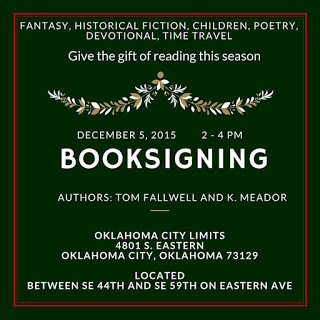MaryAnn Bernal's Blog, page 134
November 24, 2015
Reflections by K. Meador - pre-order countdown - available December 5, 2015
 Reflections is a sixteen-story devotional designed to draw yourself closer to God. Experience Him through each unique story, which will let you know He is alive and involved in your life. Reflections will help you cut through life’s distractions and rely on the one thing that is truly important – a relationship with God.Reflections serves as a refreshing reminder of God’s love and grace during difficult times. The world wants you to place your trust in your circumstances, success, talents and opinions of others, but God has called you to rise above and put your full trust in Him – to believe and apply what He’s promised in His Word more than anything else.Experience the life-changing power of God’s words as you journey through life assured that God is concerned about you.
Reflections is a sixteen-story devotional designed to draw yourself closer to God. Experience Him through each unique story, which will let you know He is alive and involved in your life. Reflections will help you cut through life’s distractions and rely on the one thing that is truly important – a relationship with God.Reflections serves as a refreshing reminder of God’s love and grace during difficult times. The world wants you to place your trust in your circumstances, success, talents and opinions of others, but God has called you to rise above and put your full trust in Him – to believe and apply what He’s promised in His Word more than anything else.Experience the life-changing power of God’s words as you journey through life assured that God is concerned about you.Pre-order Today
Join K. Meador's mailing listEmail K. Meador at: authorkmeador@gmail.com Website: www.authorkmeador.com Connect on Facebook: www.facebook.com/AuthorKMeadorAmazon page, kindly leave a review: www.amazon.com/author/kmeador

Other Books by Author K. Meador Historical Drama Their Journey BeginsJourney to Freedom – First EditionThe Knight of the Dixie Wilds
The Heart and Soul Series TranscendenceReflectionsIlluminance (coming 2016) Children Princess Alexia and the DragonLa Princesa y el DragonOn Top of the RainbowEncima Del Arco Iris
Published on November 24, 2015 05:20
Trove of Antique Roman Coins Found in Swiss Orchard
Discovery News
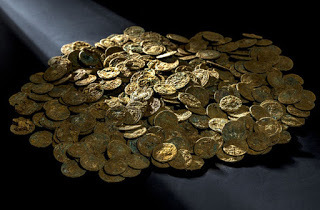
More than 4,000 bronze and silver coins dating back to Ancient Rome were found by a Swiss farmer in his cherry orchard.
© Kanton Aargau. Foto: Béla Polyvàs
A Swiss fruit-and-vegetable farmer stumbled across more than tree roots when inspecting his cherry orchard recently, uncovering a massive trove of coins buried some 1,700 years earlier, archaeologists said Thursday.
The trove of more than 4,000 bronze and silver coins dating back to Ancient Rome and weighing 15 kilos (33 pounds) was discovered in Ueken, in the northern canton of Aargau, the regional archaeological service said, describing it as one of the biggest such treasures ever found in Switzerland.
A farmer had made the spectacular discovery back in July, when he spotted a molehill with some shimmering green coins.
Largest Trove of Gold Coins Found off Israel
A few months earlier, remains of an early Roman settlement were discovered in a dig in the nearby town of Frick, so the farmer suspected he may have found Roman coins.
He contacted the regional archeological service and his suspicions were confirmed.
The service announced Thursday that after months of discreet excavations, a total of 4,166 coins had been found in excellent condition.
Their imprints remain legible, allowing an expert to determine they date back to Ancient Rome, stretching from the rein of Emperor Aurelian (year 270-275) to that of Maximilian (286-305), with the most recent coins dated to year 294.
Ancient Coins Found Buried in British Cave
“The orchard where the coins were found was never built on. It is land that has always been farmed,” archeologist Georg Matter told AFP, explaining how the treasure could have laid dormant for so long.
The coins’ excellent condition indicates that their owner systematically stashed them away shortly after they were made, the archeologists said.
For some reason, the owner had buried them shortly after 294 and never retrieved them, the archeologists said.
Recovering a Silver Treasure: Photos
Some of the coins, made mainly of bronze but with an unusually high silver content of five percent, were buried in small leather pouches.
The archaeologists said it was impossible to determine their original value due to rampant inflation at the time, but said they clearly must have been worth at least a year or two of wages.
How much the coins are worth today is beside the point, Matter said, pointing out that the farmer would not be allowed to keep his treasure.
“He will likely get a finders fee,” he said, “but the objects found belong to the public, in accordance with Swiss law.”
The Ueken treasure is set to go on display at the Vindonissa de Brugg Museum in Aargau.

More than 4,000 bronze and silver coins dating back to Ancient Rome were found by a Swiss farmer in his cherry orchard.
© Kanton Aargau. Foto: Béla Polyvàs
A Swiss fruit-and-vegetable farmer stumbled across more than tree roots when inspecting his cherry orchard recently, uncovering a massive trove of coins buried some 1,700 years earlier, archaeologists said Thursday.
The trove of more than 4,000 bronze and silver coins dating back to Ancient Rome and weighing 15 kilos (33 pounds) was discovered in Ueken, in the northern canton of Aargau, the regional archaeological service said, describing it as one of the biggest such treasures ever found in Switzerland.
A farmer had made the spectacular discovery back in July, when he spotted a molehill with some shimmering green coins.
Largest Trove of Gold Coins Found off Israel
A few months earlier, remains of an early Roman settlement were discovered in a dig in the nearby town of Frick, so the farmer suspected he may have found Roman coins.
He contacted the regional archeological service and his suspicions were confirmed.
The service announced Thursday that after months of discreet excavations, a total of 4,166 coins had been found in excellent condition.
Their imprints remain legible, allowing an expert to determine they date back to Ancient Rome, stretching from the rein of Emperor Aurelian (year 270-275) to that of Maximilian (286-305), with the most recent coins dated to year 294.
Ancient Coins Found Buried in British Cave
“The orchard where the coins were found was never built on. It is land that has always been farmed,” archeologist Georg Matter told AFP, explaining how the treasure could have laid dormant for so long.
The coins’ excellent condition indicates that their owner systematically stashed them away shortly after they were made, the archeologists said.
For some reason, the owner had buried them shortly after 294 and never retrieved them, the archeologists said.
Recovering a Silver Treasure: Photos
Some of the coins, made mainly of bronze but with an unusually high silver content of five percent, were buried in small leather pouches.
The archaeologists said it was impossible to determine their original value due to rampant inflation at the time, but said they clearly must have been worth at least a year or two of wages.
How much the coins are worth today is beside the point, Matter said, pointing out that the farmer would not be allowed to keep his treasure.
“He will likely get a finders fee,” he said, “but the objects found belong to the public, in accordance with Swiss law.”
The Ueken treasure is set to go on display at the Vindonissa de Brugg Museum in Aargau.
Published on November 24, 2015 03:30
History Trivia - Thames freezes
November 24
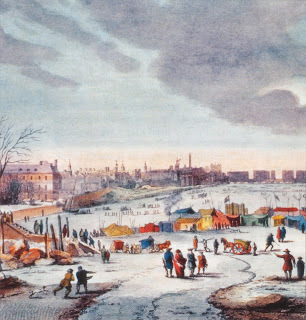
1434 Thames River froze from London Bridge to Gravesend; the frost lasted from November 24th to February 10th.
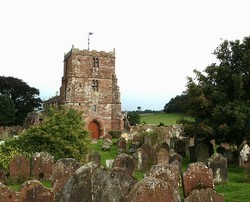
1542 at the Battle of Solway Moss: The English army defeated the Scots. The English force of approximately 3,000 was far outnumbered by an army of at least 10,000 Scots, but in-fighting among the invaders helped the English commander, Wharton, rout his foes in this surprising victory

1434 Thames River froze from London Bridge to Gravesend; the frost lasted from November 24th to February 10th.

1542 at the Battle of Solway Moss: The English army defeated the Scots. The English force of approximately 3,000 was far outnumbered by an army of at least 10,000 Scots, but in-fighting among the invaders helped the English commander, Wharton, rout his foes in this surprising victory
Published on November 24, 2015 00:30
November 23, 2015
8 things you (probably) didn’t know about Richard the Lionheart
History Extra
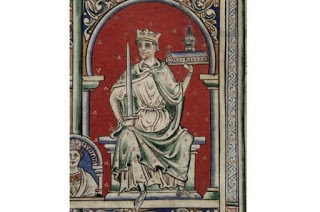
Richard I the Lionheart (from the Historia Anglorum, Chronica majora). Found in the collection of British Library. (Photo by Fine Art Images/Heritage Images/Getty Images)
Richard I is remembered for being a chivalrous king, battling Saladin during the Crusades, and for rebelling against his father, Henry II. His name has become an English legend, and there have been numerous portrayals of the king in books and films over the years.
Here, writing for History Extra, Douglas Boyd reveals eight things you might not know about the Lionheart and the time he lived in…
1) Despite being born in England, Richard may not have spoken EnglishRichard was born in September 1157 in what was then known as ‘the King’s Houses’, a palace built by his great-grandfather Henry I outside the north gate of Oxford city because it was a comfortable ride from there to his hunting tower at Woodstock. Standing near the present site of Worcester College, the palace was later demolished, but a commemorative plaque on the north side of Beaumont Street records its existence and the possibility that two kings of England may have been born there: Richard I and his younger brother John. However, Richard did not spend a great deal of time in England and he may not have learned to speak English. In his whole reign, he spent no more than six months north of the Channel.
2) There was a notable social divide in EnglandAt that time, half of England was owned by a network of 200 related Anglo-Norman families (and the rest by the crown and the church). In the century since the Norman Conquest, followers of William the Bastard and his successors married noble Anglo-Saxon women to form a new French-speaking aristocracy. Their wealth and even their food were supplied by the toil of their native Anglo-Saxon serfs, few of whom rose to greatness.
Traces of the racial and class divide of this time still exist in modern English. For the live animals herded, tended, milked and slaughtered by the natives we still use their Anglo-Saxon names like sheep, calf, cow and swine. For the cooked meat on the table, which only the French-speaking overlords were allowed to eat, we use the French equivalents: mutton, veal, beef and pork.
More cruelly still, the poor natives were not allowed to hunt wild animals for food in the forests, or even gather winter fuel there. Some modern placenames tell this story: Cannock Chase in Staffordshire is so named because ‘chase’ comes from the French word chasse meaning ‘hunt’. It was originally enclosed land, where the game was reserved for the exclusive pleasure of the overlords. A peasant defying the “forest laws for the protection of vert and venison” risked a long term in prison – or even death.
3) Richard was betrothed at 9 years oldAt the age of nine, Prince Richard was betrothed to 9-year-old Princess Alais, daughter of the French King Louis VII. She was a pawn in the power struggle between the Plantagenet dynasty that ruled England – and much of France – and the Capetian French kings in Paris. Richard’s father, Henry II of England, was also Count of Anjou and Duke of Normandy – titles that Richard would eventually inherit. Richard’s mother Eleanor was the Duchess of Aquitaine. So both were technically vassals of Louis VII for their French possessions.
Yet Henry II tricked the weakling Louis VII into handing over his young daughter, promising that she would marry Richard when she had come of age. Like most of Henry’s promises, this was never fulfilled, resulting in poor Alais being kept for 25 years as a prisoner, during part of which time Henry II used her as his mistress.
4) Richard was unwilling to get married and produce an heirWhen Richard succeeded his father to the throne at the age of 31 in 1189, he had an obligation to father an heir for the kingdom in order to avoid the kind of chaos that did ensue when he died childless and his brother John succeeded to the throne ten years later.
But Richard’s lack of interest in women and unwillingness to marry any of a long list of eligible princesses meant that the part of queen at his coronation was played by his formidable mother Eleanor of Aquitaine, the only noble woman to whom he showed any consideration.
5) Did Richard meet the legendary Robin Hood?Whether Richard met the legendary outlaw Robin Hood in Sherwood Forest, we do not know, although film buffs call him ‘Richard of the Last Reel’ because he appears at the end of every Robin Hood film as the heroic, and supposedly victorious, crusader monarch returning to punish treacherous Prince John and the wicked Sherriff of Nottingham.
The truth is that, having insulted and alienated most of his Christian allies while on crusade against Saladin, Richard was unable to return to his kingdom except by sneaking in disguise through the territory of the Duke of Austria, one of the many enemies he had made in the Holy Land. Once caught, he was handed over to the German emperor, who demanded a huge ransom for his liberation, and the enduring legend of ‘Good King Richard’ originated as a PR campaign by Queen Eleanor to persuade the citizens of the Plantagenet empire to stump up the crippling ransom.
6) Were tournaments really so chivalrous?Tournaments in Richard’s lifetime were not the ordered ritual they later became, with noble ladies watching two knights charging at each other along separated tracks, each endeavouring to unseat the other with his lance. The mêlée of the 12th century featured two teams of heavily armed and armoured knights setting upon each other with whatever weapons they liked in a no-rules lethal forerunner of tag wrestling.
The painting of emblems on shields was originally to enable knights in a mêlée to recognise their own team-mates. The name Plantagenet comes from the habit of Richard’s grandfather, Count Geoffrey of Anjou, wearing a sprig of bright yellow broom – genêt in French – in his helmet as a highly-visible recognition symbol. Often, the shock of head-on collision between two knights shattered the wooden shafts of their lances, with splinters penetrating the eye-slits of their helmets and blinding them.
In both battle and the mêlée, an unhorsed knight risked being trampled to death by the horses, which is what happened to Richard’s brother Prince Geoffrey. Knights taken prisoner in a mêlée were freed after paying a ransom to their captors, which was calculated on their rank and wealth. So Richard could see nothing wrong with his subjects having to stump up crippling taxes to ransom so important a person as their king. In effect, this nearly bankrupted his kingdom for the second time in his short reign that ended in 1199.

An image of Richard I and Saladin. Found in the British Library, c1325-1335. (Photo by Photo12/UIG/Getty Images)
7) Richard spent the majority of his life at warTo understand Richard’s thinking, we have to take into account that, like many nobly born knights, he spent his whole life in warfare. The idea of chivalry and protecting the poor did not exist in the 12th century, when knights prosecuted their incessant power struggles not in pitched battles against a more or less equally matched enemy, but strategically by slaughtering defenceless peasant men, women and children, burning their humble homes, laying waste their fields and cutting down their orchards to bring starvation to the survivors, thus depriving their enemy of the support base that financed his unproductive way of life. It was, to use a modern expression, total war – an idea that the church struggled with, but could not stop.
8) Richard knighted his cookOn a lighter note: in those days of little hygiene, the cook was an important member of a noble household because his mistakes could kill his employer. After one particularly memorable feast, which put Richard in great good humour, he impulsively knighted his cook, making him ‘lord of the fief of the kitchen of the counts of Poitou’. Arise, Sir Cook!
Douglas Boyd’s Lionheart, the true story of England’s Crusader King was published by The History Press in 2014.

Richard I the Lionheart (from the Historia Anglorum, Chronica majora). Found in the collection of British Library. (Photo by Fine Art Images/Heritage Images/Getty Images)
Richard I is remembered for being a chivalrous king, battling Saladin during the Crusades, and for rebelling against his father, Henry II. His name has become an English legend, and there have been numerous portrayals of the king in books and films over the years.
Here, writing for History Extra, Douglas Boyd reveals eight things you might not know about the Lionheart and the time he lived in…
1) Despite being born in England, Richard may not have spoken EnglishRichard was born in September 1157 in what was then known as ‘the King’s Houses’, a palace built by his great-grandfather Henry I outside the north gate of Oxford city because it was a comfortable ride from there to his hunting tower at Woodstock. Standing near the present site of Worcester College, the palace was later demolished, but a commemorative plaque on the north side of Beaumont Street records its existence and the possibility that two kings of England may have been born there: Richard I and his younger brother John. However, Richard did not spend a great deal of time in England and he may not have learned to speak English. In his whole reign, he spent no more than six months north of the Channel.
2) There was a notable social divide in EnglandAt that time, half of England was owned by a network of 200 related Anglo-Norman families (and the rest by the crown and the church). In the century since the Norman Conquest, followers of William the Bastard and his successors married noble Anglo-Saxon women to form a new French-speaking aristocracy. Their wealth and even their food were supplied by the toil of their native Anglo-Saxon serfs, few of whom rose to greatness.
Traces of the racial and class divide of this time still exist in modern English. For the live animals herded, tended, milked and slaughtered by the natives we still use their Anglo-Saxon names like sheep, calf, cow and swine. For the cooked meat on the table, which only the French-speaking overlords were allowed to eat, we use the French equivalents: mutton, veal, beef and pork.
More cruelly still, the poor natives were not allowed to hunt wild animals for food in the forests, or even gather winter fuel there. Some modern placenames tell this story: Cannock Chase in Staffordshire is so named because ‘chase’ comes from the French word chasse meaning ‘hunt’. It was originally enclosed land, where the game was reserved for the exclusive pleasure of the overlords. A peasant defying the “forest laws for the protection of vert and venison” risked a long term in prison – or even death.
3) Richard was betrothed at 9 years oldAt the age of nine, Prince Richard was betrothed to 9-year-old Princess Alais, daughter of the French King Louis VII. She was a pawn in the power struggle between the Plantagenet dynasty that ruled England – and much of France – and the Capetian French kings in Paris. Richard’s father, Henry II of England, was also Count of Anjou and Duke of Normandy – titles that Richard would eventually inherit. Richard’s mother Eleanor was the Duchess of Aquitaine. So both were technically vassals of Louis VII for their French possessions.
Yet Henry II tricked the weakling Louis VII into handing over his young daughter, promising that she would marry Richard when she had come of age. Like most of Henry’s promises, this was never fulfilled, resulting in poor Alais being kept for 25 years as a prisoner, during part of which time Henry II used her as his mistress.
4) Richard was unwilling to get married and produce an heirWhen Richard succeeded his father to the throne at the age of 31 in 1189, he had an obligation to father an heir for the kingdom in order to avoid the kind of chaos that did ensue when he died childless and his brother John succeeded to the throne ten years later.
But Richard’s lack of interest in women and unwillingness to marry any of a long list of eligible princesses meant that the part of queen at his coronation was played by his formidable mother Eleanor of Aquitaine, the only noble woman to whom he showed any consideration.
5) Did Richard meet the legendary Robin Hood?Whether Richard met the legendary outlaw Robin Hood in Sherwood Forest, we do not know, although film buffs call him ‘Richard of the Last Reel’ because he appears at the end of every Robin Hood film as the heroic, and supposedly victorious, crusader monarch returning to punish treacherous Prince John and the wicked Sherriff of Nottingham.
The truth is that, having insulted and alienated most of his Christian allies while on crusade against Saladin, Richard was unable to return to his kingdom except by sneaking in disguise through the territory of the Duke of Austria, one of the many enemies he had made in the Holy Land. Once caught, he was handed over to the German emperor, who demanded a huge ransom for his liberation, and the enduring legend of ‘Good King Richard’ originated as a PR campaign by Queen Eleanor to persuade the citizens of the Plantagenet empire to stump up the crippling ransom.
6) Were tournaments really so chivalrous?Tournaments in Richard’s lifetime were not the ordered ritual they later became, with noble ladies watching two knights charging at each other along separated tracks, each endeavouring to unseat the other with his lance. The mêlée of the 12th century featured two teams of heavily armed and armoured knights setting upon each other with whatever weapons they liked in a no-rules lethal forerunner of tag wrestling.
The painting of emblems on shields was originally to enable knights in a mêlée to recognise their own team-mates. The name Plantagenet comes from the habit of Richard’s grandfather, Count Geoffrey of Anjou, wearing a sprig of bright yellow broom – genêt in French – in his helmet as a highly-visible recognition symbol. Often, the shock of head-on collision between two knights shattered the wooden shafts of their lances, with splinters penetrating the eye-slits of their helmets and blinding them.
In both battle and the mêlée, an unhorsed knight risked being trampled to death by the horses, which is what happened to Richard’s brother Prince Geoffrey. Knights taken prisoner in a mêlée were freed after paying a ransom to their captors, which was calculated on their rank and wealth. So Richard could see nothing wrong with his subjects having to stump up crippling taxes to ransom so important a person as their king. In effect, this nearly bankrupted his kingdom for the second time in his short reign that ended in 1199.

An image of Richard I and Saladin. Found in the British Library, c1325-1335. (Photo by Photo12/UIG/Getty Images)
7) Richard spent the majority of his life at warTo understand Richard’s thinking, we have to take into account that, like many nobly born knights, he spent his whole life in warfare. The idea of chivalry and protecting the poor did not exist in the 12th century, when knights prosecuted their incessant power struggles not in pitched battles against a more or less equally matched enemy, but strategically by slaughtering defenceless peasant men, women and children, burning their humble homes, laying waste their fields and cutting down their orchards to bring starvation to the survivors, thus depriving their enemy of the support base that financed his unproductive way of life. It was, to use a modern expression, total war – an idea that the church struggled with, but could not stop.
8) Richard knighted his cookOn a lighter note: in those days of little hygiene, the cook was an important member of a noble household because his mistakes could kill his employer. After one particularly memorable feast, which put Richard in great good humour, he impulsively knighted his cook, making him ‘lord of the fief of the kitchen of the counts of Poitou’. Arise, Sir Cook!
Douglas Boyd’s Lionheart, the true story of England’s Crusader King was published by The History Press in 2014.
Published on November 23, 2015 03:00
History Trivia - Charlemagne arrives at Rome
November 23
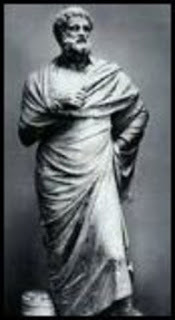
534 BC Thespis of Icaria became the first actor to portray a character onstage.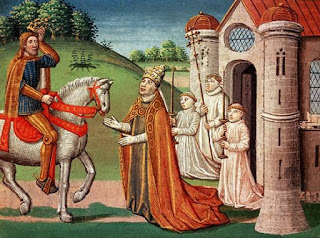
800 Charlemagne arrived at Rome to investigate the alleged crimes of Pope Leo III.
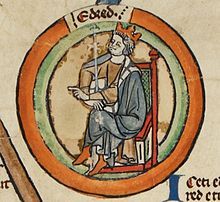
955 King Eadred died. King of Wessex and acknowledged as overlord of Mercia, and the Danelaw, Eadred brought Northumbria permanently under English rule.

534 BC Thespis of Icaria became the first actor to portray a character onstage.

800 Charlemagne arrived at Rome to investigate the alleged crimes of Pope Leo III.

955 King Eadred died. King of Wessex and acknowledged as overlord of Mercia, and the Danelaw, Eadred brought Northumbria permanently under English rule.
Published on November 23, 2015 01:30
November 22, 2015
Everville: The Fall of Brackenbone - free on Kindle 11/22/16-11/26/15

Two very different worlds, Easton Falls University and the magical realm of Everville are in dire need of a hero. Owen Sage embarks on an epic journey of monumental proportions to save these worlds all while fighting to keep the world within himself intact. This quest is not for the faint of heart nor is it for the weak of mind-only the bravest will succeed. Discovering the well-kept secret of The Fourth Pillar of Truth is only part of the feat. Owen will have to outwit the ever-powerful villain Governor Jahal and overcome countless other challenges along the way. Amongst all of the dragons, giants and grand chaos, will Owen's acquired skills and wisdom be enough to save both worlds or will peril be the ultimate fate of all?
Critically Acclaimed 2015 IAN Book of the Year Fantasy Finalist!Ancient civilizations, parallel worlds, aliens, time travel, epic fantasy, dragons and college! Books #3 and #4 in the best-selling, award-winning Everville series can be read as stand alone novels and have it all for teens, new adults, and all ages alike.
"Huff’s novel took me to a different place, where daily life is somehow seen as only a surface-rippling manifestation of its beyond and beneath... the book moved me ever so swiftly between portals of worlds somehow far distant, yet juxtaposed, in time and space to each other. Imagined people and exotic intelligent beasties cohabit and move at dizzying speed between each other's worlds." -George F. Simmons Amazon US
Amazon UK
Published on November 22, 2015 03:30
History Trivia - Battle of Ballon - Charles the Bald defeated
November 22
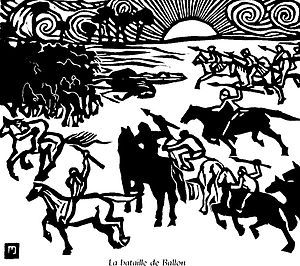
845 the first King of all Brittany, Nominoe, defeated the Frankish king Charles the Bald at the Battle of Ballon near Redon.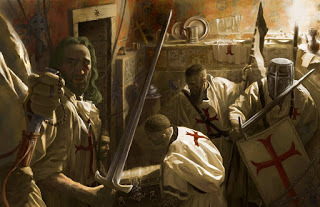
1307 Pope Clement V issued the papal bull Pastoralis Praeeminentiae which instructed all Christian monarchs in Europe to arrest all Templars and seize their assets.
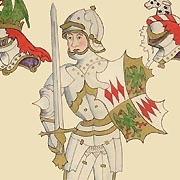
1428 Richard Neville, 16th Earl of Warwick and also known as known as Warwick the Kingmaker, was born.

845 the first King of all Brittany, Nominoe, defeated the Frankish king Charles the Bald at the Battle of Ballon near Redon.

1307 Pope Clement V issued the papal bull Pastoralis Praeeminentiae which instructed all Christian monarchs in Europe to arrest all Templars and seize their assets.

1428 Richard Neville, 16th Earl of Warwick and also known as known as Warwick the Kingmaker, was born.
Published on November 22, 2015 01:30
November 21, 2015
Everville: Books 1-3 Boxed set - 99 cents 11/22/15-11/28/15.

SINGLE-AUTHOR, EPIC-FANTASY ANTHOLOGY BY BEST-SELLING, AWARD-WINNING AUTHOR ROY HUFF
“Potentially one of the greatest YA sagas of recent decades."
Book #4, Everville: The Fall of Brackenbone also now available!
THIS BOXED SET INCLUDES THE FOLLOWING FULL LENGTH NOVELS:Everville: The First Pillar. Owen Sage is the emblematic college freshman at Easton Falls University. With all the worries about his first year in college, he was not prepared for what would happen next. His way of life was flipped upside down when he mysteriously crossed into another dimension, into the beautiful land of Everville. His excitement was abruptly halted when he discovered that there was a darkness forged against both the natural world, which he knew well, and the new land which he discovered, Everville. He must devise a plan to save both worlds while joining forces with the race of Fron and The Keepers, whom both harbor hidden secrets he must learn in order to gain power over the evil that dwells in The Other In Between.
With a race against time to save both worlds, his short time at Easton Falls did not quite prepare him for the evil, dark forces he must fight in order to conquer The Other In Between.
Everville: The City of Worms.College freshman Owen Sage has just started to understand the darkness trying to overtake Everville and the earthly realm. With the help of The Keeper and the Fron army, Owen has managed to buy some time, but new problems have already emerged, new secrets need to be revealed, and the race against time to stop Them from conquering both dimensions has only just begun. The Keeper, Owen Sage, and his friends at Easton Falls University must now battle threats from within. To do it, they must reunite with familiar creatures and join forces with new ones as they navigate their journey to the truth that awaits them in Everville.
Everville: The Rise of Mallory, 2014 Readers' Favorite Silver Medal Winner!As the epic journey continues, a victorious Owen Sage stands undefeated against his enemies. His last battle in Everville gave rise to a new insidious evil, Mallory; whose determination to defeat him opens an unexplored Pandora’s box. Owen's search for truth will unveil the mystery and surprising insights surrounding himself and his friends at Easton Falls University. New creatures will be uncovered and the true value of friendship will be tested, as Owen embarks on yet another battle in Everville.
“Potentially one of the greatest YA sagas of recent decades." - Tiffany Sarradet
“Action adventure & characters that refuse to be denied" - Ionia Martin
Amazon USAmazon UK
Published on November 21, 2015 03:30
History Trivia - Judas Maccabaeus restores the Temple in Jerusalem
November 21

164 BC Judas Maccabaeus, son of Mattathias of the Hasmonean family, restored the Temple in Jerusalem. This event is commemorated each year by the festival of Hanukkah.

235 St. Anterus became Roman Catholic pope. He was Pope from November 21, 235 to January 3, 236, and succeeded Pope Pontian, who had been deported from Rome along with the antipope Hippolytus to Sardinia. Anterus was the son of Romulus, born in Petilia Policastro and is thought to have been of Greek origin, but the name could indicate that he was a freed slave. He died on January 3, 236 of undetermined causes.

164 BC Judas Maccabaeus, son of Mattathias of the Hasmonean family, restored the Temple in Jerusalem. This event is commemorated each year by the festival of Hanukkah.

235 St. Anterus became Roman Catholic pope. He was Pope from November 21, 235 to January 3, 236, and succeeded Pope Pontian, who had been deported from Rome along with the antipope Hippolytus to Sardinia. Anterus was the son of Romulus, born in Petilia Policastro and is thought to have been of Greek origin, but the name could indicate that he was a freed slave. He died on January 3, 236 of undetermined causes.
Published on November 21, 2015 01:30

